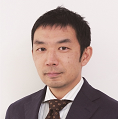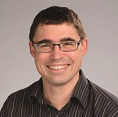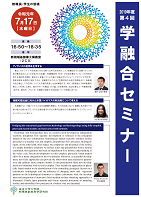AY2019 4th Gakuyugo Seminar
- Date&Time:
- Jul 17, 2019 16:50~18:35
- Venue:
- Large Lecture Room (2C0), New Frontier Science Bldg.

Chemistry of nano-sized space
Professor Takafumi UemuraRecently, metal-organic structures (MOFs), which are synthesized by self-assembly reactions between organic ligands and metal ions, have attracted much attention as new porous materials to replace zeolites and activated carbons. The size, shape, and surface state of the regular spaces in this material can be rationally designed by various combinations of ligands and metal ions. In this talk, I will describe the synthesis and characteristics of these nanospace materials and their applications as adsorbents and reaction fields, including their future prospects. In particular, I will discuss in detail the technology that enables precise control of the primary structure (molecular weight, steric regularity, reaction position, etc.) and aggregation state (particulation, orientation, alloying) of polymers when used as a field for the creation of new polymer materials.

Thinking about the Utilization of Woody Biomass for a Sustainable Society
Associate Professor Misato Otani
In this lecture, an overview of woody biomass biosynthetic mechanisms will be presented, as well as the challenges for its utilization and efforts from various fields. In addition, discussion will be held on strategy ideas for achieving this goal from each participant's field of expertise.

Bridging the conceptual gaps between hydrology and hydrogeology using fully coupled, physically based models and innovative field methods
Bridging the conceptual gaps between hydrology and hydrogeology using fully coupled, physically based models and innovative field methods
Hydrology and hydrogeology have to a certain extent developed as independent scientific disciplines. This separate development is reflected in the This separate development is reflected in the conceptual models of the two communities: hydrological models typically simulate surface processes in a detailed way, but simplify groundwater flow processes. Hydrogeologists, on the other hand, often reduce the complexity and dynamics of the surface to a simple boundary condition. As surface water and groundwater form a natural continuum, this separation has been an impediment for a holistic understanding of the water cycle. As surface water and groundwater form a natural continuum, this separation has been an impediment for a holistic understanding of the water cycle. In this presentation, these new developments are illustrated with several examples. They include the application of physically based models to the identification of the controlling geological factors on a They include the application of physically based models to the identification of the controlling geological factors on a catchment's hydrograph and the influence of changing snow and vegetation patterns on the hydrological dynamics in Alpine catchments. Also, the development and integration of innovative field methods in these modeling approaches is illustrated. Finally, open questions and future Also the development and integration of innovative field methods in these modeling approaches is illustrated. Finally, open questions and future research directions in modeling surface and subsurface flow processes in a holistic way are discussed.
*The contents of this page were developed based on a machine translation.

